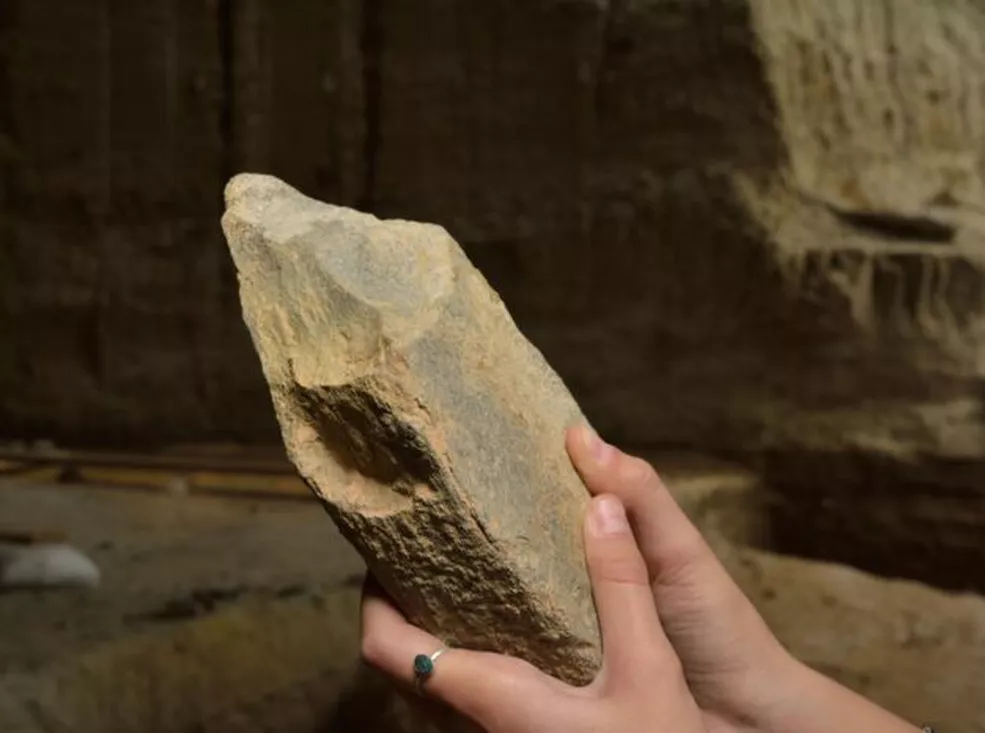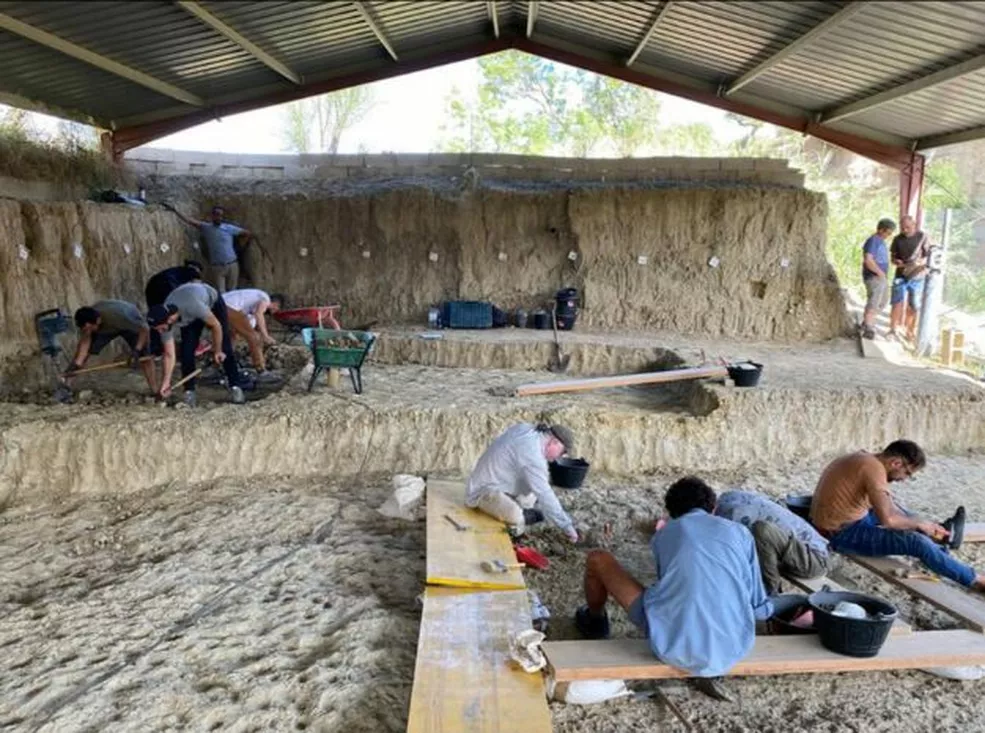The first advanced stone tools in Europe were made at the Barranc de la Boella site more than 900,000 years ago
A study has identified evidence of advanced technological behavior in stone tools made by hominins between 900,000 and 780,000 years ago at the Barranc de la Boella site (La Canonja, Tarragona). The research, developed by a team from IPHES-CERCA, has used modern analytical techniques to study hominins' manufacturing and resource management strategies. The results have shown that these tools not only represent an evolutionary milestone, but also open up a new perspective on the arrival of new human populations in Europe.
This is the main conclusion of the article published in the prestigious Journal of Paleolithic Archaeology, in a work led by Dr. Diego Lombao, researcher at the University of Santiago de Compostela and associate researcher at IPHES-CERCA, in which IPHES-CERCA researchers Dr. Juan Ignacio Morales, Dr. Marina Mosquera, Dr. Andreu Ollé, Dr. Josep Vallverdú and Dr. Palmira Saladié also participated.
Technological innovations in the manufacture of tools in the Barranc de la Boella
The research team has documented that the hominins who occupied the Barranc de la Boella developed large tools, typical of Mode 2 or Acheulean, such as axes and picks, using local raw materials with a high level of planning and efficiency. These tools, created with bifacial carving techniques, were used for various activities related to subsistence.
According to the team, the identified technological behaviours represent a significant advance with respect to the technologies present in Europe at that time, known as Mode 1 or Oldowan. Among these advances, the selection and preparation of raw materials stands out, with a differential management of their resources. Flint was mainly used to make smaller tools, while schist was reserved for the production of large instruments. It has also been identified that the first stages of the manufacturing process of these large tools could have occurred outside the excavated sites and that they would have been systematically transported to the places where they were needed.
The hominins who inhabited Barranc de la Boella demonstrated advanced and flexible technological behaviours, including the use of diverse carving strategies. These technological practices reflect a significant capacity for anticipation, visible in the transport of already-made tools and in the selection of initial morphologies to facilitate the obtaining of desired shapes.
These practices not only reflect technological sophistication, but also a high cognitive capacity of hominins from this period. "Barranc de la Boella is a unique testimony to the technological change of hominins in Europe at a time when tools were not only utilitarian, but also involved sophisticated planning and a more efficient use of resources," says Diego Lombao, lead author of the article. "This site shows us that technological innovation was not linear or a completely abrupt leap, but the result of multiple waves of population dispersion and the gradual arrival in Europe of new technological behaviours from Africa," he concludes.
A key event in human evolution
"Barranc de la Boella is a key testimony to the first Mode 2 dispersals in Europe, marking a turning point in the technological history of the continent," says Diego Lombao. The similarities with other sites, such as Ubeidiya in the Levant, reinforce the hypothesis that these innovations were introduced to Europe through multiple migrations and cultural exchanges from Africa. This discovery not only reduces the chronological gap between Europe, Asia and Africa, but also demonstrates that European human populations already shared technological elements with African populations almost a million years ago.
Research has shown that these sites could represent an early Acheulean dispersal, followed by several subsequent waves of migration during the Middle Pleistocene, which contributed to the technological diversity observed in Europe in this period and which highlights the uniqueness of the technological behaviour identified at Barranc de la Boella.
"Barranc de la Boella shows us that the European continent was not an isolated scenario, but rather a space of exchange and technological evolution in constant contact with Africa and the Near East," concludes Lombao. This discovery reinforces the key role of the site in understanding the first chapters of the technological evolution of hominins on the European continent.
A unique site in Europe
The Barranc de la Boella, made up of several sites such as the Mina, the Forn and the Cala 1, is recognised as one of the oldest Mode 2 or Acheulean sites in Europe. Research carried out in Unit II has revealed a large number of stone tools and animal bones that allow us to reconstruct the daily activities and subsistence habits of these early human groups.
Level II.2 of the Cala 1 site, for example, has been interpreted as a site where a mammoth ( Mammuthus meridionalis ) was exploited and skinned, while at La Mina, evidence of interaction with other predators, such as hyenas and large felines, has been found. These data point to a great capacity of hominins to adapt to changing environments and the management of available resources, and to the competition arising from the presence of large carnivores.
Financing
The intervention at the Barranc de la Boella site is part of the four-year project “Palaeoenvironmental evolution and prehistoric settlement in the Francolí, Gaià, Siurana and Tarragona river basins” approved by the Department of Culture of the Generalitat de Catalunya, which also financed the campaign (CLT009/18/00053). These interventions have been jointly financed by the Department of Culture and the Canonja Town Council, which has shown a firm commitment to the preservation and promotion of the local archaeological heritage. In addition, the council has promoted the creation of the Espai Mammuthus , an interpretation centre dedicated to the Barranc de la Boella site, with the aim of disseminating the discoveries and promoting cultural tourism in the municipality.
Article:
Lombao, D., Morales, JI, Mosquera, M., Ollé, A., Saladié, P. and Vallverdú, J. (2024). Beyond Large ‐ Shaped Tools: Technological Innovations and Continuities at the Late Early Pleistocene Assemblage of El Barranc de la Boella (Tarragona, Spain). Journal of Paleolithic Archaeology, 7:25.
DOI: 10.1007/S41982-024-00189-9


